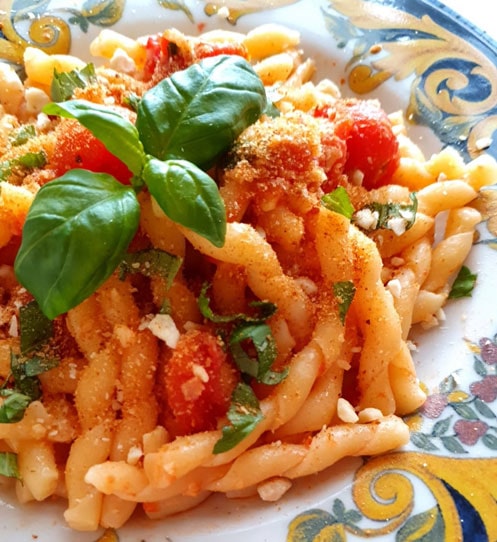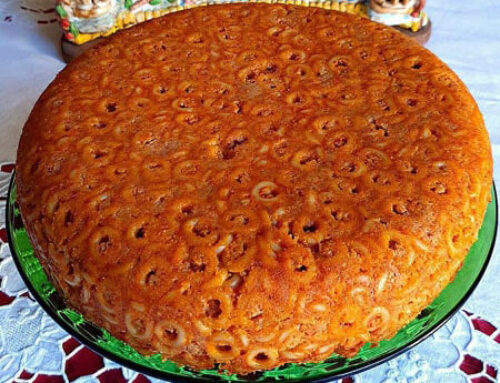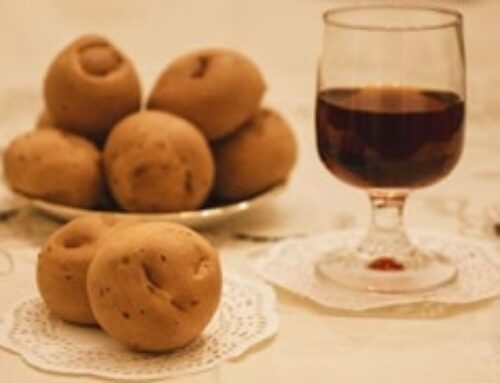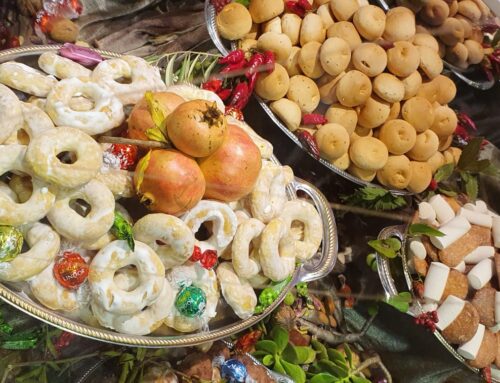
Perhaps not everyone knows that pasta has its origins in the land of Sicily. In 1154 the geographer al-Idrisi wrote a text on behalf of King Ruggero in which he described a place that was already called Trabia at the time in which there were vast lands and rivers that fed mills and testified that so much pasta was produced in this place to be even exported. Muhammad al-Idrisi recounts in his book: “To the west of Termini there is the village of Trabia, an enchanting site, rich in perennial waters and mills, with a beautiful plain and vast farms in which pasta is made in such quantities to supply, in addition to the countries of Calabria, the Muslim and Christian territories, where substantial loads are sent ”.
This passage demonstrates that Norman Sicily (1061-1198 AD) continued to occupy, even after the Arab domination, a central position in the manufacture of dried pasta, thus managing to enhance its large production of durum wheat which was the indispensable raw material. It seems, in fact, that it was the Muslims who created, in the early 10th century, in Trabia, the first plant for the production of “ytria” or spaghetti, which in Sicilian dialect are still called “tria” today.
For a long time, history has told us that pasta was imported into Italy by Marco Polo on his return from China (and Marco Polo certainly took it with him) but this happened at the end of the 13th century while the Sicilians at that time they had been eating spaghetti for three hundred years and even exported them! In fact, in the Norman period pasta was exported “to Calabria”, an expression that indicated not only Calabria, but also Puglia, Basilicata and Campania. One of the most ancient typically Sicilian pasta shapes are the busiate which are bucatini “al ferretto” typical of the Trapani area and widespread throughout Sicily.
Some scholars maintain that they are the oldest Sicilian homemade pasta; in fact, there are some Arab documents from the 10th – 11th century which attest to the presence of dry pasta with holes on the island. The name originates from the term “busa”, which indicates the stem of a typical Mediterranean grass that grows on arid soils. In reality the busiate (or in the masculine “busiati”) well represent the typical pasta of Southern Italy, made by means of more or less thin and round tubes, sticks or underwire. In fact, a reed with a diameter of three / four millimeters was used to roll and pull the busiate, replaced only in more recent times by the needles for socks or the special underwire. This pasta is prepared with durum wheat semolina, water and salt and from the mixture obtained are obtained pieces of dough the size of a walnut that are rolled up to form sticks at least ten centimeters long. Each stick is then placed on the underwire and rolled up on the pastry board, so as to obtain a spaghettone with holes that can be removed with a sharp blow of the hand. There are long busiates that are not divided when the underwire is extracted and short busiates that instead become part of the large fusilli family. If the industrial format has strongly characterized and distinguished the busiate, drawing them in a narrow spiral, the home-made products come in different formats ranging from the open spiral of the fusillo to the more closed one of the bucatino. A typical dish of the most classic Sicilian gastronomic tradition are the “busiate con il pesto alla trapanese” or busiate seasoned with a raw sauce pounded in a mortar, prepared with extra virgin olive oil, basil, peeled tomato, garlic, adding pecorino or alternatively toasted breadcrumbs, and finally chopped almonds, an essential feature of the Trapani culinary tradition.
Cristina Colajanni






Leave A Comment